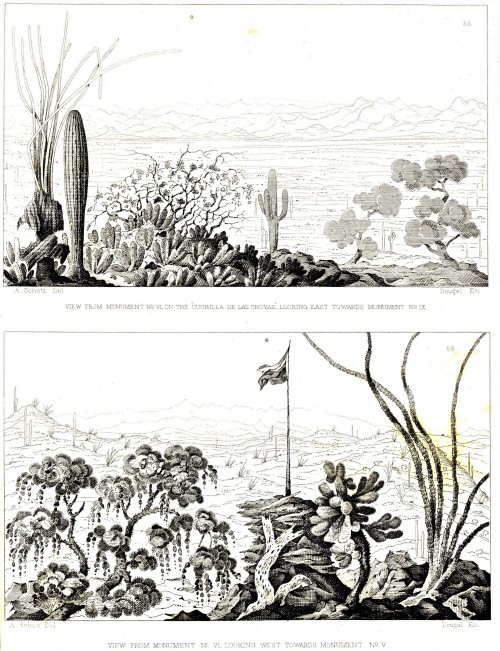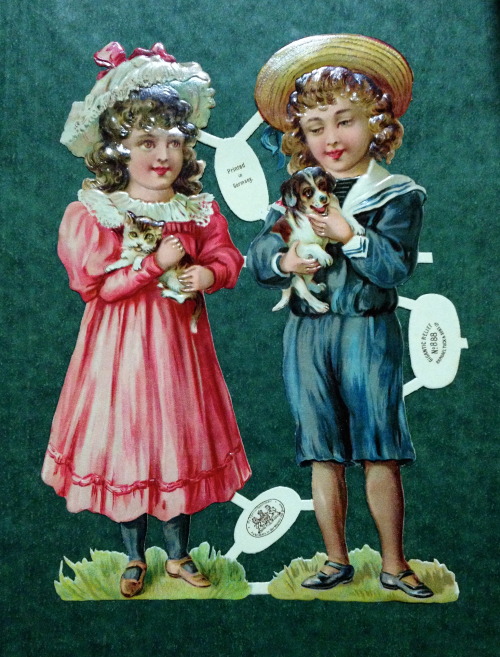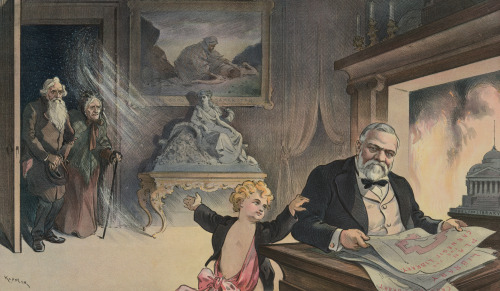#chromolithographs
Science Saturday
Cacti along the U.S.-Mexican Border
From 1848 to 1855, the United States conducted a survey of the U.S.-Mexican border under the leadership of American surveyor and civil engineer William H. Emory. The survey established the border between the United States and Mexico as defined in the Treaty of Guadalupe Hidalgo, and the results were reported in this three-volume set, Report on the United States and Mexican Boundary Survey, published in Washington D.C. by government printer Cornelius Wendell from 1857-1859.
In addition to its documentation of the new boundary, the survey report was notable for its natural history content, including the most comprehensive vegetative investigation ever conducted on the 1,969 mile border between Mexico and the United States. Many botanists took part in different legs of the Survey, including the German-American botanist George Engelmann who wrote the section on Cactaceae.
The illustrations shown here, which include several species of cacti, are by the German-American artist and botanist Arthur Schott. The engravings were engraved by William Henry Dougal andJames David Smillie. The chromolithograph of Tohono O'odham (Papago) women harvesting Organ Pipe Cactus fruit was printed by the New York firm of Sarony, Major & Knapp.
ViewmoreScience Saturdayposts.
Post link
These colorful chromolithographs from Raphael Tuck & Sons are part of a 193 piece collection of color prints and clippings collected for scrapbooking during the late 19th and early 20 century. As hinted at in the bottom two examples, these shaped prints were sold in sheets connected by little paper tabs. While this post features children, other common subjects included insects, animals, flowers, story book characters, costumes, and Christmas.
Raphael Tuck, a Prussian immigrant, founded his printing company in 1866 in England. At first the business focused on selling art reproductions, but soon expanded to postcards, paper toys, children’s books, and Christmas cards. In the early 1900s, as postcards continued to grow in popularity, the company held multiple contests for postcard designs open to the general public. Much of the company’s color printing was done in Germany, even into the 20th century. The company’s English headquarters were destroyed during the Blitz, and the business never fully recovered, combining with two other companies in 1959 to form the British Printing Corporation.
Newberry call number: Case Wing folio NE2540 .E54
Post link
A Christmas Reminder
Udo J. Keppler (American; 1872–1956)
Centerfold illustration in: Puck, Vol. 50, No. 1294 (December 18, 1901)
Chromolithograph
Library of Congress, Prints and Photographs Division, Washington, D.C.
Caption
Puck(to Mr. Carnegie). — “Books are already so cheap and libraries so abundant that even the poorest man has all the literature he wants. Now, why not provide respectable homes for the people who are too old to work and who were never able to save anything from their scanty wages; — and so keep them from beggary, starvation or suicide?”
Post link
Prang Christmas Card
1880–90s
Chromolithograph (publisher’s proof)
Publisher: L. Prang & Co. (Boston, Mass.)
The New York Public Library, Print Collection
Post link










